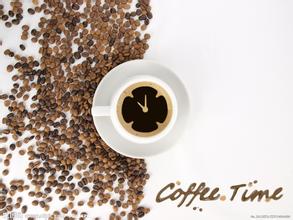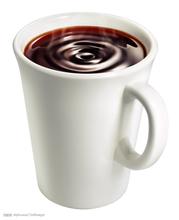Introduction to the description of the treatment methods of grinding degree for the flavor and taste characteristics of Ecuadorian coffee
As one of the best Arabica coffee producers in the world, Ecuador's unique ecosystem advantages make coffee produced in different coffee producing areas in Ecuador have a unique taste. This is why coffee made from Ecuadorian coffee beans, whether single-serve coffee or blended coffee, is endless and tasteless with every sip. In order to let more Chinese consumers know about Ecuadorian fine coffee, Ecuador's Export and Investment Promotion Agency (Pro Ecuador) and InkaLab Coffee jointly organized an Ecuadorian fine coffee cultural experience event at Shanghai InkaLab Coffee Institute on the 11th of this month. This event aims to enhance Chinese consumers 'understanding of Ecuadorian coffee and related food culture, thus having a positive impact on the future sales of Ecuadorian coffee in the Chinese market.
The best Ecuadorian coffee is grown on San Cristobal Island in the Galapagos Islands, where natural conditions are unique to the best coffee houses in the world. A cup of Galapagos coffee, like the beautiful scenery of the Galapagos Islands, is sure to impress you.
In the mid-15th century, among fishermen fishing in the Pacific Ocean off western South America, there were legends of magical islands. It is said that the islands can sometimes be clearly seen from a distance, but disappear as the ship approaches; sometimes they look like a galleon, sometimes they take on the shape of a witch. Fishermen called the islands "the enchanted islands," thinking they might be ruled by demons like the banshees of the sea in the Odyssey. This island, known to fishermen as the "magic island," is today the Galapagos Islands.
In 1535, the Galapagos Islands were discovered by chance by Frei Thomas de Berlanga of Spain and others. Thomas was born in 1487 on the banks of the Duro River in the Spanish province of Soria. He was the fourth bishop of Panama at that time. He was ordered to Peru. When his ship set out from Panama on February 23, under the impact of a strong current, they were carried to an unknown sea in the outer ocean. On March 10, an island in the Galapagos Islands was discovered. With only two days of fresh water left on board, the sailors landed in lifeboats and found plenty of seals, turtles, giant tortoises that could carry people and viper-like iguanas on the island, but they could not find fresh water, so they headed for another larger island more than 20 kilometers away. As there was still no wind, it took them days to get there, the water ran out quickly, and they had to starve, including the horses on board.
When Thomas and his crew landed on the island, they frantically searched for water and were so thirsty that they squeezed juice from the fat petals of cacti to drink. Finally found water in a ravine in a rock. Thomas attributed it to God because it was Good Friday and they had celebrated Mass piously before setting out in search of water. Thomas would never have known, however, that the island they landed on was the only one in the Galapagos with plenty of fresh water, today Saint Cristobal.
San Cristobal is a large island in the Galapagos Archipelago. At an altitude of 410 meters, there is a small lake called El Junco. The lake forms several streams flowing along the rocks and volcanic rocks on the southern slope of the island. Fresh water rich in minerals nourishes the land of San Cristobal, making the soil here always moist and fertile. provides the most difficult conditions for coffee growing here.

Important Notice :
前街咖啡 FrontStreet Coffee has moved to new addredd:
FrontStreet Coffee Address: 315,Donghua East Road,GuangZhou
Tel:020 38364473
- Prev

Rich aromatic Ugandan coffee flavor description the characteristics of the producing area introduction to the taste of boutique coffee beans
Mbale on the eastern side of the Elgang Mountains and other producing areas on the western side near the border of the Democratic Republic of the Congo have the export name Wugar. The official ranks are Oaganic (Organic), BugisuAA, BugisuA, BugisuB, Bugisu PB, Wugar, Drugar and other unlisted grades. To find a good Ugandan coffee, you must first identify BugisuAA, An and P
- Next

Description of Coffee Flavor in Panamanian Jade Manor introduction to the treatment of fine coffee beans
Panamanian coffee is famous for the rosy summer of the Emerald Manor, which is also famous in the Boquete region of its Chiriqui province. Boquete is a town in Chiriqui, Riki province, located near the border between Panama and Costa Rica, near the famous Baru Baru volcano, scenic and fertile soil.
Related
- Detailed explanation of Jadeite planting Land in Panamanian Jadeite Manor introduction to the grading system of Jadeite competitive bidding, Red bid, Green bid and Rose Summer
- Story of Coffee planting in Brenka region of Costa Rica Stonehenge Manor anaerobic heavy honey treatment of flavor mouth
- What's on the barrel of Blue Mountain Coffee beans?
- Can American coffee also pull flowers? How to use hot American style to pull out a good-looking pattern?
- Can you make a cold extract with coffee beans? What is the right proportion for cold-extracted coffee formula?
- Indonesian PWN Gold Mandrine Coffee Origin Features Flavor How to Chong? Mandolin coffee is American.
- A brief introduction to the flavor characteristics of Brazilian yellow bourbon coffee beans
- What is the effect of different water quality on the flavor of cold-extracted coffee? What kind of water is best for brewing coffee?
- Why do you think of Rose Summer whenever you mention Panamanian coffee?
- Introduction to the characteristics of authentic blue mountain coffee bean producing areas? What is the CIB Coffee Authority in Jamaica?

